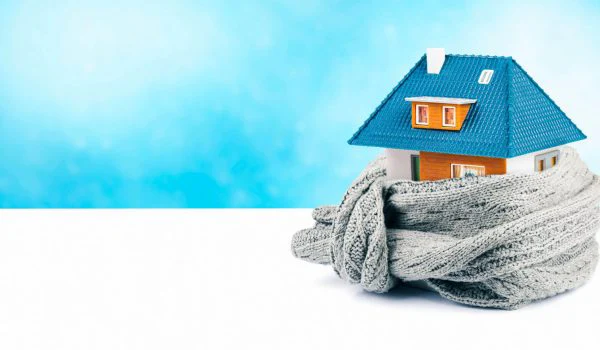
What Is R38 Insulation and Why It Matters for Los Angeles Homes
R38 describes the thermal resistance of insulation. The higher the R-value, the better it slows heat flow. In Los Angeles, that single number plays a quiet but constant role in comfort, energy use, and indoor air quality. R38 insulation is a common target for attics across Southern California because attics drive most heat gain and loss in our climate. Done right, it helps homes stay cooler during Valley heat waves and warmer during winter nights near the foothills.
What R38 Means in Plain Terms
R38 indicates the material resists heat flow to a level r38 insulation Los Angeles of 38. In practice, it reflects a thickness and density combination, which varies by product. Fiberglass batts need around 12 inches to reach R38. Loose-fill fiberglass takes roughly 12 to 14 inches. Cellulose usually reaches R38 in about 10 to 11 inches because it packs more densely. Spray foam is measured differently by inches per R-value, but closed-cell foam reaches high R-values in fewer inches and is often used for vaulted assemblies.
The goal is simple: slow the attic’s temperature swings from pouring into living areas. With Los Angeles sunshine, attic temperatures can climb above 130°F on summer afternoons. R38 creates a buffer, which reduces air conditioner runtime and evens out room temperatures.
Why Los Angeles Homes Benefit From R38
Homes from Santa Monica to Silver Lake share a mild baseline climate but face microclimate extremes. Beach neighborhoods deal with cool, damp marine layers and salt-laden air. The Valley sees triple-digit heat. Northeast Los Angeles feels strong diurnal swings. R38 insulation in the attic stabilizes all of these patterns.
Most existing homes in Los Angeles were built with little or no attic insulation. It is common to find R0 to R11 in pre-1990s homes. Upgrading to R38 can cut attic heat flow by more than half compared with R11. Clients often report a 2 to 4 degree reduction in upstairs temperatures on hot days and notice that the AC cycles less frequently during peak afternoon hours.
How R38 Fits Local Codes and Best Practice
California’s Title 24 energy code sets prescriptive insulation targets by climate zone. Many Los Angeles neighborhoods fall into zones where R38 attic insulation meets or exceeds attic recommendations for existing homes. For new construction and deep retrofits, builders may pair R38 with air sealing and duct sealing to meet performance targets.
From a practical standpoint, R38 is the sweet spot for retrofit attics in Los Angeles. It balances cost, installation time, and measurable comfort. Going higher, like R49, can help in special cases, but the incremental gains shrink unless other upgrades are also in place.

Material Choices for R38 in LA Attics
Fiberglass batts deliver predictable R-values but require clean, even placement with no compression or gaps around joists. Loose-fill fiberglass works well in attics with many obstacles because it fills voids around wires and framing. Cellulose offers strong coverage and air-flow resistance, which helps in windy attics near roof vents. Closed-cell spray foam suits vaulted ceilings, flat roofs, and tight assemblies where venting is limited.
An experienced installer weighs existing joist depth, roof pitch, wiring, recessed lights, and access points. For example, a 1950s Ranch in Sherman Oaks with 2x6 joists might get an air seal plus raised platforms, then loose-fill cellulose to reach R38 without burying critical electrical junctions.
Air Sealing: The Step That Protects Your R38
Insulation slows heat; air sealing blocks uncontrolled airflow. Both matter in Los Angeles because wind can push marine air or dry canyon gusts through recessed lights, chases, and top-plate gaps. Before adding new R38, a technician should seal the attic plane. Common targets include light cans, plumbing penetrations, chimney chases, HVAC chases, and open wall tops. Without this step, insulation can underperform by 10 to 25 percent.
Pure Eco Inc typically begins with a blower door test or a targeted inspection. Crews use sealant and fire-rated materials around heat sources. They add draft-stopping around flues, then insulate. This sequence delivers steady indoor temperatures and cleaner indoor air by reducing attic dust and outside pollutants.
What Homeowners Notice After Upgrading to R38
Clients report fewer hot-and-cold spots, especially in rooms under the attic. Air conditioners tend to run shorter cycles with longer off periods. Winter mornings feel less chilly; the heater gets a break. In some homes, hallway and bedroom temperatures align within 1 to 2 degrees, where previously they differed by 5 or more.
In energy terms, savings vary by house size, insulation starting point, and HVAC efficiency. For Los Angeles single-family homes that move from minimal insulation to R38, annual HVAC energy use can drop by 10 to 20 percent. Homes with ducts in the attic see stronger gains once duct leaks are sealed or the ducts are buried under the new insulation.
Attic Ventilation and R38: Getting the Balance Right
Ventilation should work with insulation, not fight it. Most pitched roofs in Los Angeles benefit from continuous soffit and ridge vents to move hot air out. Baffles at the eaves keep air channels open and prevent wind from disturbing the insulation. If a home lacks soffits or uses gable vents, a pro will design a plan that avoids short-circuiting airflow. Over-ventilating can pull conditioned air from the house if air sealing is skipped, so balance matters.
Common Installation Pitfalls in Los Angeles Homes
Contractors see the same issues across neighborhoods from Mar Vista to Highland Park. Batts cut too short leave gaps. Overstuffed batts compress and lose R-value. Loose-fill blown too low under roof trusses creates thin spots. Recessed lights without covers create bare patches for fire clearance. Storage platforms crush insulation if built without stand-offs. Electrical junctions get buried without marking, which complicates future work. An experienced crew addresses these points before closing out the job.
R38 and Roof Types: Shingle, Tile, and Flat Roofs
Asphalt shingle roofs handle standard venting and deep insulation easily. Spanish tile roofs often provide taller rafter bays and irregular vent paths, so careful baffle work is important. Flat roofs in Los Angeles, common in Mid-Century and contemporary homes, often need insulation above the roof deck or spray foam below. Achieving an R38 equivalent in a flat roof may involve a hybrid approach, such as closed-cell foam under the deck plus a protected roof membrane above.
Health and Safety Notes Homeowners Care About
Installers wear PPE and manage dust. Cellulose has fire retardants and is treated for pests, which helps in older attics. Fiberglass is inert and does not support mold growth, but air sealing is still crucial to limit moisture movement. Around flues and can lights, fire-clearance rules are strict. In homes with knob-and-tube wiring, an electrician may need to update circuits before burying wires under insulation. Pure Eco Inc flags such issues during the site visit.
Quick Comparison: R38 Options and Use Cases
- Fiberglass batts: Good for open bays and straightforward joist layouts; requires exact fitting and no compression.
- Loose-fill fiberglass: Great for covering irregular spaces and retrofits; easy to top off in the future.
- Cellulose loose-fill: Strong coverage and air-flow resistance; helpful under windy vent conditions.
- Closed-cell spray foam: Best for tight or vaulted assemblies and flat roofs; higher material cost per inch.
Costs, Timelines, and What Affects Your Quote
For a typical Los Angeles attic of 800 to 1,500 square feet, an R38 retrofit with air sealing often completes in a day. Costs vary by material, access, debris removal, and prep work. Removing old insulation, rodent-proofing, baffle installation, and light covers add to scope but protect long-term performance. Clients who combine air sealing, duct sealing, and R38 insulation see the best cost-to-benefit results, especially in homes with aging HVAC.

Real-World Example
A 1,300-square-foot Spanish-style home near Echo Park had around R8 of patchy fiberglass and several open chases. The team air sealed, installed baffles at the eaves, built raised storage platforms, and blew in cellulose to R38. The owner reported a quieter home, fewer dust issues, and a 25 percent reduction in peak summer AC use, based on utility bills from similar weather periods.
How Pure Eco Inc Approaches R38 Insulation in Los Angeles
Pure Eco Inc focuses on the whole attic system. The crew inspects for safety issues, air leaks, duct leaks, and ventilation gaps. They propose the right R38 material for the roof type and access points, then schedule work to minimize disruption. After installation, they document depth and coverage, label junction boxes, and confirm ventilation pathways remain open. The result is reliable performance that aligns with Los Angeles climate patterns and code expectations.
When R38 Is Not Enough
Some homes need more than attic insulation to solve comfort complaints. West-facing rooms with large single-pane windows may require window upgrades or shading. Crawl spaces that leak air can undermine gains upstairs. Leaky supply ducts in a 140°F attic can erase the benefits of new insulation. In these cases, Pure Eco Inc maps a phased plan: air sealing, R38 attic insulation, duct sealing or replacement, and targeted envelope improvements.
How to Get Started
- Schedule a site visit for an attic assessment and quote.
- Ask for air sealing and ventilation checks alongside the R38 plan.
- Request photos of gaps and safety items before work begins to understand scope.
Residents searching for r38 insulation Los Angeles, whether in Hollywood Hills, Pasadena, West LA, or the Valley, can expect clear pricing, practical recommendations, and code-aware installation from a team that works these homes every week. Call Pure Eco Inc to discuss your attic, get a same-week assessment in most neighborhoods, and see where R38 will make the biggest difference in your home.
Pure Eco Inc. provides professional attic insulation and energy-saving solutions in Los Angeles, CA. For over 20 years, our family-owned company has helped homeowners improve comfort, reduce utility bills, and make their homes more energy efficient. We specialize in insulation upgrades, spray foam installation, and attic cleanup for homes across Los Angeles County. At Pure Eco Inc., we believe in treating our customers like family and creating a greener, healthier living environment for every household we serve. Call today to schedule an attic insulation inspection or get a free estimate. Pure Eco Inc.
422 S Western Ave #103 Phone: (213) 256-0365 Website: https://www.pureecoinc.com Social Media:
Facebook |
X |
Instagram |
Yelp
Map: View on Google Maps
Los Angeles,
CA
90020,
USA